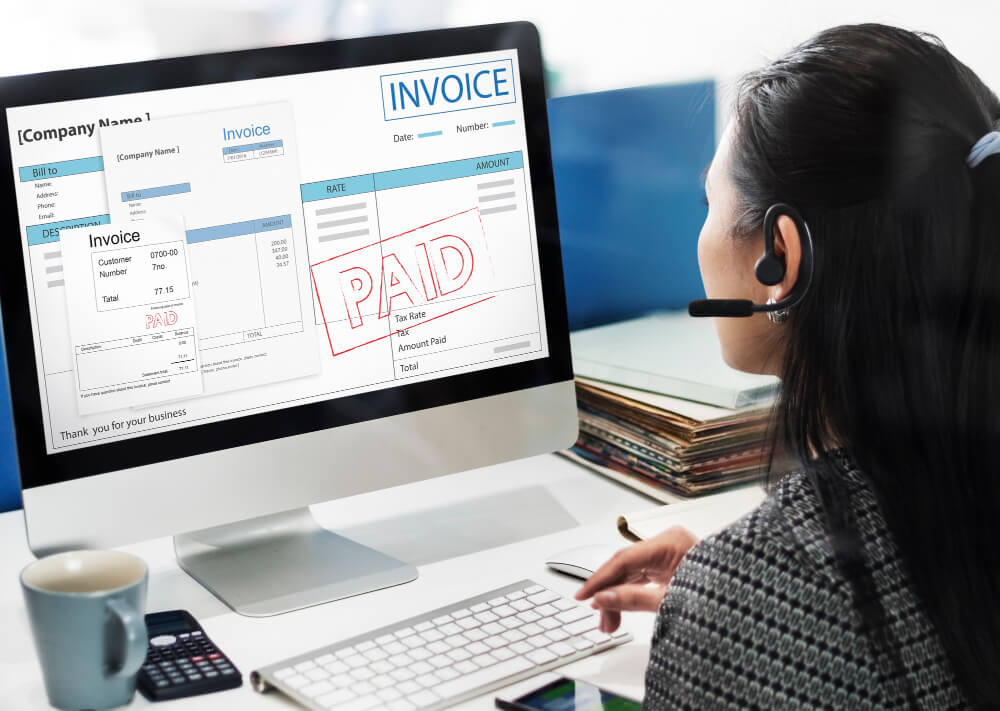What Is an Invoice?
An invoice is a commercial document issued by a seller to a buyer, detailing the goods or services provided and the amount due for payment. It serves as a formal request for payment and typically includes an itemized list of the products or services, along with their costs, payment terms, and other relevant information.
Elements of an Invoice
An effective invoice must include several key elements to ensure clarity, accuracy, and compliance. Here are the components of an invoice template:
Invoice Number
A unique identifier is assigned to each invoice for tracking and reference purposes. This number helps both the seller and the buyer keep track of individual transactions.
Invoice Date
The date when the invoice is issued. This date is important for calculating payment terms and due dates.
Due Date
The date by which payment is expected. Clearly stating the due date helps avoid any confusion and encourages timely payment.
Seller Information
Details about the business issuing the invoice, including the business name, address, contact information, and sometimes a logo. This information ensures the buyer knows who the invoice is from.
Buyer Information
Details about the recipient of the invoice, including their name, address, and contact information. This ensures the invoice is directed to the correct party.
Itemized List
A detailed breakdown of the goods or services provided, including descriptions, quantities, unit prices, and total amounts for each item. This section provides transparency and clarity about what the buyer is being charged for.
Total Amount Due
The total amount that the buyer needs to pay, including the sum of all itemized charges and any applicable taxes, discounts, or additional fees.
Payment Terms
Conditions outlining how and when payment should be made, including accepted payment methods (e.g., bank transfer, credit card, PayPal) and any early payment discounts or late payment penalties.
Description of Goods or Services
A clear and concise description of the products or services provided. This helps the buyer understand the charges and verify that they correspond to what was delivered or performed.
Invoice Number for Tracking
A unique invoice number assigned sequentially or according to a specific system. This number helps in tracking and managing invoices efficiently.
Additional Notes or Terms
Any additional information or specific terms related to the transaction, such as delivery instructions, warranties, or return policies. This section can also include a thank-you note or other messages to the buyer.
Tax Information
Details about any taxes applied to the transaction, including tax rates and amounts. This information ensures compliance with tax regulations and provides transparency for the buyer.
Payment Instructions
Clear instructions on how to make the payment, including bank account details, online payment links, or other relevant information. This helps facilitate smooth and timely payments.
By including these elements, an invoice provides all the necessary information for the buyer to understand the charges, make the payment, and keep records of the transaction.
What Is an Invoice Used for?
Invoices serve multiple essential functions in business operations, providing numerous benefits for both sellers and buyers.
Maintaining Records
Invoices act as a formal record of transactions, detailing the goods or services provided and their associated costs. This documentation helps businesses keep track of sales, manage inventory, and monitor revenue.
Payment Tracking
By issuing invoices, businesses can efficiently track payments. Each invoice serves as a reminder for the buyer to make a payment by the specified due date. This system helps in managing cash flow and ensures timely collection of payments.
Legal Protection
An invoice is a legal document that provides evidence of the agreement between the seller and the buyer. It includes details such as the items sold, their prices, and the payment terms. This documentation can be crucial in resolving disputes, verifying claims, or during audits.
Easy Tax Filing
Invoices simplify the tax filing process by providing a clear and detailed record of all sales transactions. This ensures accurate reporting of income and helps in claiming any eligible deductions, thus aiding in compliance with tax regulations.
Business Analytics
Invoices offer valuable data that can be analyzed to gain insights into business performance. By reviewing invoice data, businesses can identify sales trends, understand customer purchasing behavior, and make informed decisions to improve operations and strategy.
Types of Invoices
Businesses utilize various types of invoices to cater to different needs and situations. Understanding these types can help in choosing the right one for specific transactions.
Proforma Invoice
A proforma invoice is a preliminary bill of sale sent to buyers before the delivery of goods or services. It outlines the estimated cost and details of the transaction. This type of invoice helps buyers understand the terms and total cost in advance, aiding in budgeting and decision-making.
Standard Invoice
The standard invoice is the most common type used by businesses. It includes an itemized list of goods or services provided, the total amount due, payment terms, and due date. This invoice is typically issued after the completion of a sale or service.
Interim Invoice
An interim invoice is used for large projects where payments are made in installments. It requests payment for portions of work completed to date rather than waiting until the entire project is finished. This type helps businesses manage cash flow and ensures they receive regular payments throughout the project duration.
Recurring Invoice
Recurring invoices are issued for ongoing services or subscription-based products. They are sent at regular intervals, such as monthly or annually, and are commonly used by businesses that provide continuous services like software subscriptions, maintenance, or membership fees.
Final Invoice
The final invoice is issued once all goods or services have been delivered and the project or sale is completed. It includes the total amount due, reflecting any previous payments made through interim invoices, and signifies the end of the billing cycle for that particular transaction.
Overdue Invoice
An overdue invoice is sent when a payment has not been made by the due date specified in the original invoice. It often includes late fees or interest charges and serves as a reminder for the buyer to make the overdue payment as soon as possible.
Invoices and Accounts Payable
Invoices are integral to the accounts payable process. When a business receives an invoice, it needs to verify that the goods or services were received as billed and then process the payment. Properly managing invoices helps ensure that suppliers are paid on time, which can maintain good supplier relationships and avoid any disruptions in supply chains.
Invoices and Internal Controls
Implementing strong internal controls for handling invoices can prevent errors and fraud. This includes steps like segregating duties among employees, requiring multiple approvals for large transactions, and conducting regular audits.
Is an Invoice a Bill or Receipt?
An invoice is often confused with a bill or a receipt. An invoice is a document sent by a seller to a buyer requesting payment for goods or services. A bill, on the other hand, is more commonly used by the buyer to describe the document they receive from the seller. A receipt is a proof of payment issued by the seller once the invoice has been paid.
Does an Invoice Mean You’ve Been Paid?
No, an invoice does not mean payment has been made. It is a request for payment, and the buyer is expected to fulfill this request by the due date specified on the invoice.
What You Can Do with Invoice Software
Invoice software can greatly enhance and simplify the invoicing process, offering numerous features and benefits for businesses of all sizes.
Create Professional Invoices
Invoice software allows you to create professional-looking invoices using customizable templates. These templates can be tailored to reflect your brand, including your logo, colors, and other design elements, ensuring that your invoices look polished and consistent.
Send Invoices Easily
With invoice software, you can send invoices directly to clients via email with just a few clicks. This not only speeds up the invoicing process but also reduces the costs associated with printing and mailing paper invoices.
Track Payments
Invoice software helps you keep track of which invoices have been paid and which are still outstanding. This real-time tracking ensures that you always know the status of your receivables, helping you manage cash flow more effectively.
Set Up Recurring Invoices
For businesses that provide ongoing services or subscription-based products, invoice software can automate the creation and sending of recurring invoices. This feature saves time and ensures that clients are billed accurately and on schedule.
Manage Cash Flow
Invoice software provides insights into your business’s financial health by tracking payments and outstanding invoices. This information can help you forecast cash flow, identify potential cash shortages, and make informed financial decisions.
Integrate with Accounting Software
Many invoice software solutions integrate seamlessly with accounting systems, allowing you to sync your invoicing data with your overall financial records. This integration streamlines your accounting processes and ensures that all financial information is accurate and up to date.
Accept Online Payments
Invoice software often includes options for clients to pay invoices online. By offering multiple payment methods, such as credit cards, bank transfers, or digital wallets, you can make it easier for clients to pay, thereby speeding up the payment process.
Automate Payment Reminders
Automated payment reminders can be set up to notify clients when an invoice is due or overdue. This reduces the need for manual follow-ups and helps ensure timely payments.
Generate Reports
Invoice software can generate detailed reports on your invoicing activities. These reports can provide insights into sales trends, outstanding payments, and client payment behavior, helping you make data-driven business decisions.
Enhance Security
Using invoice software can enhance the security of your invoicing process. Digital invoices are less likely to be lost or tampered with than paper ones. Many invoice software solutions offer secure data storage and encryption to protect sensitive financial information.



